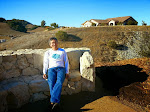Although only a small proportion of the general public or even the faculty and administrators involved seem to be aware of it, community colleges are in the business of preparing future teachers.
It has been estimated that 40% of U.S. K-12 teachers took math or science at a two-year college (http://www.nsf.gov/pubs/1999/nsf9949/nsf9949.htm ) and that 46% of baccalaureates in science and engineering have attended a two-year school (http://www.nsf.gov/statistics/nsf04302/ ).
The numbers of K-12 teachers who attended two-year colleges only grows if we include courses and degrees in non-STEM disciplines.
At California State University Northridge (CSUN) , which identifies teacher preparation as one of its primary missions, more than half of their students in the multi-subject credential program (for teaching elementary school ) took math courses at a community college. Most of CSUN's math majors are considering a career in teaching, and about two-thirds of CSUN math majors took math at a community college.
Many or most universities require only 3 to 9 units of courses taught by math departments for the students preparing to become elementary school teachers. Some of these units may be taken at a community college, and considering that many students (51% at CSUN) take developmental math classes at a two-year schools, and furthermore that some students (20% at CSUN) require as much as 20 units of remediation, our prospective elementary school teachers are probably taking more math at two-year colleges than at four-year colleges and universities combined.
A number of faculty at two-year colleges take seriously their role in the recruitment and education of future teachers. The Teacher Prep Committee ( http://amatyc.dtcc.edu/ , http://teacherprep.amatyc.org/ ) is one of only eight standing national committees of the American Mathematical Association of Two-Year Colleges. Yet there are two-year colleges where the "Math for Teachers" class either does not exist or is taught primarily by adjunct faculty because the full-time faculty do not have sufficient interest to teach the course, or the institution is not sufficiently motivated to run the course.


No comments:
Post a Comment